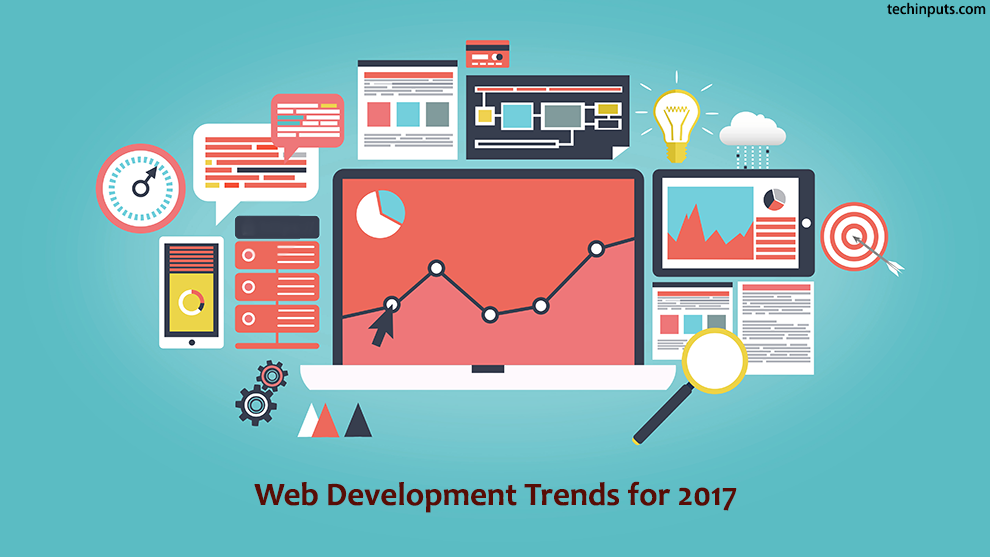In recent years, the web has been getting more and more ingrained in our daily lives. We use it for everything, from shopping to banking. The demand for web development talent is as high as ever, and the scope of what developers can do is huge!
As technology advances users are demanding more and more from their online user experiences (UX). Personal, interactive, and relevant are three keywords which users want from their UX. Here are new trends and tools which are all working to enhance UX.
1. Motion UI
Motion UI is a Sass library for quickly creating CSS transitions and animations and is used by Foundation components such as Toggler, Reveal and Orbit.
With Motion UI, it is less complicated to make an application’s transitions look seamless and rich with predefined motions. The way prototypical animated elements integrate smoothly into websites makes Motion UI one of the most preferred libraries by developers.
A year ago, we saw a developing pattern of Motion UI which is certain to remain for the following couple of years.
2. Virtual Reality
Another topic that dependably appears to surface while discussing the future of technology is virtual reality or VR. This trend has already started to sweep the gaming industry.
Companies including Google and Mozilla have started work on APIs to help VR technology transition to the web. As standards develop, we expect more and more applications to be developed using VR technologies.
In the coming year, we’ll see virtual reality in various applications, ranging from news coverage, to virtual real estate tours.
3. Internet of Things (IoT)
The internet of things is a movement where normally non-internet-connected objects are given network connectivity in order to send and receive data.
Web developers may not be directly involved in the creation of such devices. However, it’s likely we’ll be involved in the development of applications that use, analyse and display the devices’ data. Companies such as Xively and BugLabs have already started working on APIs that can be used by developers to communicate with IoT devices.
According to Technavio, IoT will grow by 31.72% (CAGR) between 2015 and 2019. Most recent IoT solutions discover application in a few modern systems – For example : smart homes, smart grids, smart logistics and smart cities.
4. Cloud-based IDEs
With most of the standard, desktop-based productivity software we all know and love moving to the Cloud, it’s not surprise that Cloud-based IDEs are quickly gaining ground with developers.
Now a days, the browser is basically a thin client that allows users to access a variety of Cloud-based applications and services. However, many are still unsure to put their full faith in a remote Cloud IDE for development purposes.
Tools like Github and Pastebin helped to ease the transition to Cloud-based development, and full-fledged Cloud IDEs are now commonly used by many developers.
5. Constraint-based design tools
Responsive design has totally changed how we browse and build for the web.
But it hasn’t really changed how design tools work, in general. Most of the popular design tools (such as webflow) require you to simply rebuild the same screen over and over for different device sizes and resolutions.
In an industry that’s all about fast development, ideation, and launches, that massive time sink simply isn’t sustainable.
Hence a new wave of design tools (such as Figma) that utilize the idea of constraints to reduce the amount of repeated work designers have to do when building cross-device layouts. These tools focus on the spatial relationships between elements and strive to preserve them as composite elements are resized by devices and users.
6. Flexbox
Flexbox, is a new layout mode in CSS3. This Module offers both incredible responsive-friendliness in its functionality, but also makes a lot of sense to visual designers used to manipulating objects on the canvas with the align and distribute tools offered in the likes of Sketch and Illustrator.
For many applications, the flexible box model provides an improvement over the block model in that it does not use floats, nor do the flex container’s margins collapse with the margins of its contents.
7. Rails5
The newest release of Rails came with some interesting additions that web developers should get excited about.
- Turbolinks 5 allows developers to create Single Page like Applications directly from the Rails stack by allowing links to fetch full HTML pages and replacing the body, without the need for client-side JavaScript frameworks.
- ActionCable is a new way to use websockets in Rails to create real time applications. This makes creating notifications and chat features so much easier, while having access to all your ActiveRecord resources.
- Rails 5 also merged the popular rails_api gem into its codebase. Developers can now easily create API only applications in Rails and hook them up to their favourite JavaScript or native frameworks.
8. Use of Colors and Gradients
Designers are beginning to guide far from “flat design”, and focus on what makes a brand their identity; personality and culture. Website specialists are keeping on growing visually interesting and bold styles which are effective in passing on a brand while keeping up and enhancing usability for the user.
9. Full-Screen Navigation Design
Full-screen navigation design is a feature that improves the user experience on mobile devices. Suppose a user is navigating a website on his mobile phone and he comes across a registration form. As he taps on the registration form, the form jumps to a full-screen size enabling the user to fill out the form in a more natural way.
Most of the web developers and designers are developing sites for full-screen navigation designs and this trend is going to continue.
10. Speed and Performance Matter
Users value high page speed over advancement. Page speed tight HTML, JavaScript, and CSS code are approaches to accelerate a website. Speedier websites make happy users and visitors invest less time on websites that react gradually.

